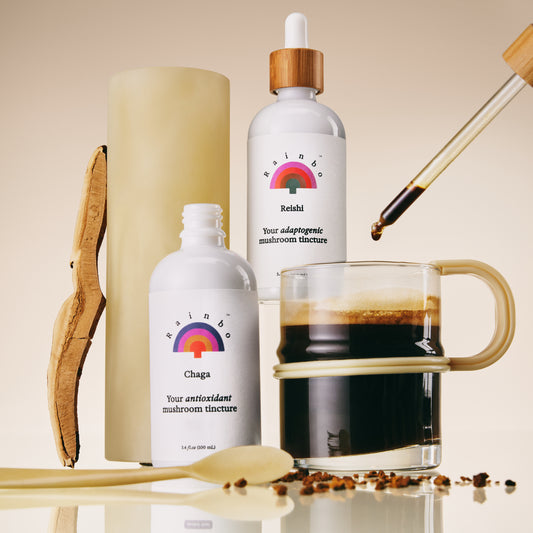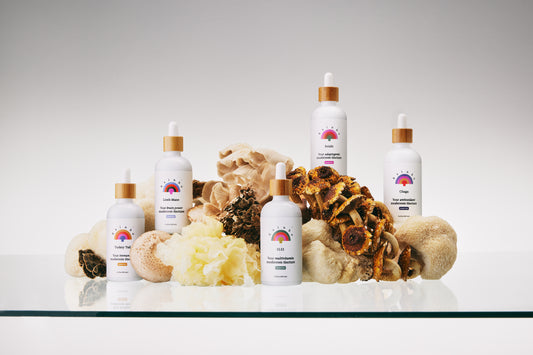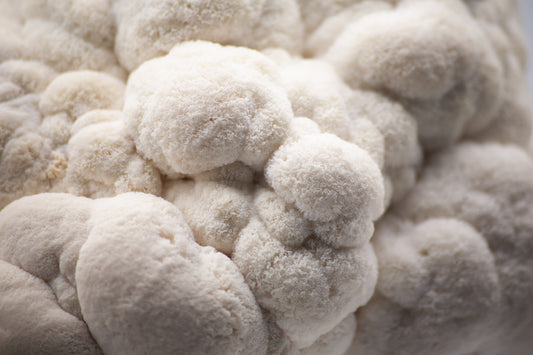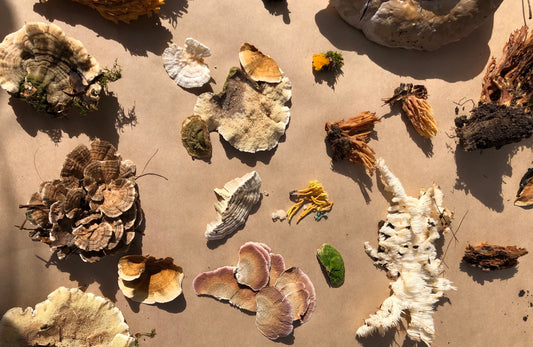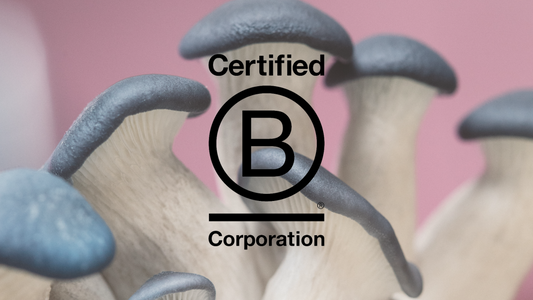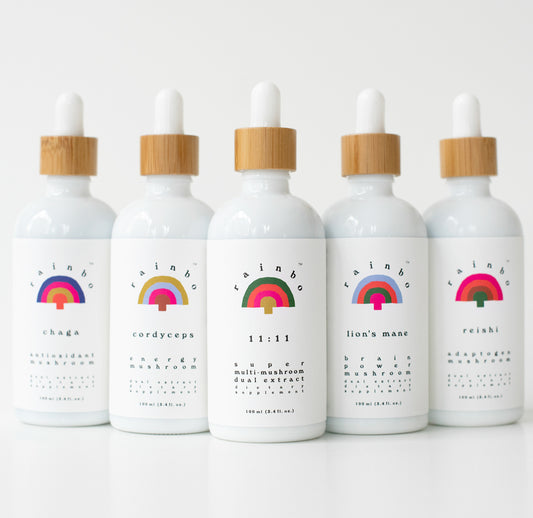Chaga Mushroom
Chaga, Inonotus obliquus
What is it?
The most popular fungus in Northern European traditional medicine, Chaga is referred to as the King of Mushrooms - although it hardly resembles a mushroom.
Found growing on the bark of birch trees in colder climates, an exterior looking like burnt charcoal masks a beautiful, orange healing remedy within.
The high concentration of antioxidants found in Chaga make it one of the most powerful medicinal mushrooms known to us. Chaga is inedible and thus must be extracted in the form of a tea or tincture to be made bioavailable.
Chaga is a parasitic fungus that takes decades to grow on birch trees. It cannot be cultivated in the lab, however there are sustainable harvesting practices available to us.
*At Rainbo we source our Chaga locally from Canadian forests, and we harvest small chunks in a sustainable manner to protect the tree. Learn more about how we cultivate and use our mushrooms*
History
The name "Chaga" originates from the Russian word for mushroom "czaga". Chaga's history lies in Northern Siberia where indigenous use it as treatment for disease both internally, when drunk as a tea, and externally, when used as a rubbing soap.
What does the science say?
Today its use is growing in popularity. The high antioxidant content found in Chaga makes it a potent mushroom for longevity.
Antioxidants work in our body to keep reactive oxygen species (ROS) in balance. ROS are active chemicals that are constantly produced in biological tissues but can accumulate during times of environmental stress. Many ROS result in oxidative stress at a cellular level- which is linked to aging and disease.
Scientific studies have shown that the compounds found in Chaga provide a protective antioxidant effect acting as scavengers of ROS and "quenching" the chemical reactivity before any damage can occur,
Studies of Chaga have revealed that it is full of many bioactive compounds including polysaccharides, melanin complexes, and triterpenoids.
Unique to Chaga are triterpenoids inotodiol and betulinic acid derivatives.
These compounds have shown a spectrum of pharmaceutical properties such as anti-diabetic, antimicrobial and anti-inflammatory.

What do we see in scientific studies?
1. Antioxidant
- Chaga contains one of the highest antioxidant contents of any food, which acts to protect DNA, slow the aging process, and even provide skin-protection against UV-light induced damage.
- Chaga ranks 3 times higher than acai berries according to its antioxidant ORAC score. ORAC stands for oxygen radical absorbance capacity.
2. Immune Health
- Chaga extract stimulates the immune cells involved in fighting off harmful bacteria and viruses which may enhance our response to infection.
- Chaga extracts are also shown to increase anti-inflammatory markers which act to reduce inflammation in the body.
Learn more about how medicinal mushrooms support immune function
3. Metabolic Support
- Studies have linked Chaga to both lower blood sugar and lower cholesterol levels.
- Chaga may play a beneficial role in controlling metabolic disorders such as type 2 diabetes, and obesity.
Chaga is a cellular protector.
For those looking to support longevity using a whole system approach, this powerful fungi is for you.
Find our dual extract Chaga tincture here and our raw, sacred Chaga mushroom powder hand-harvested by Spirit Bear here.



